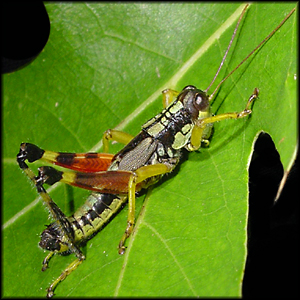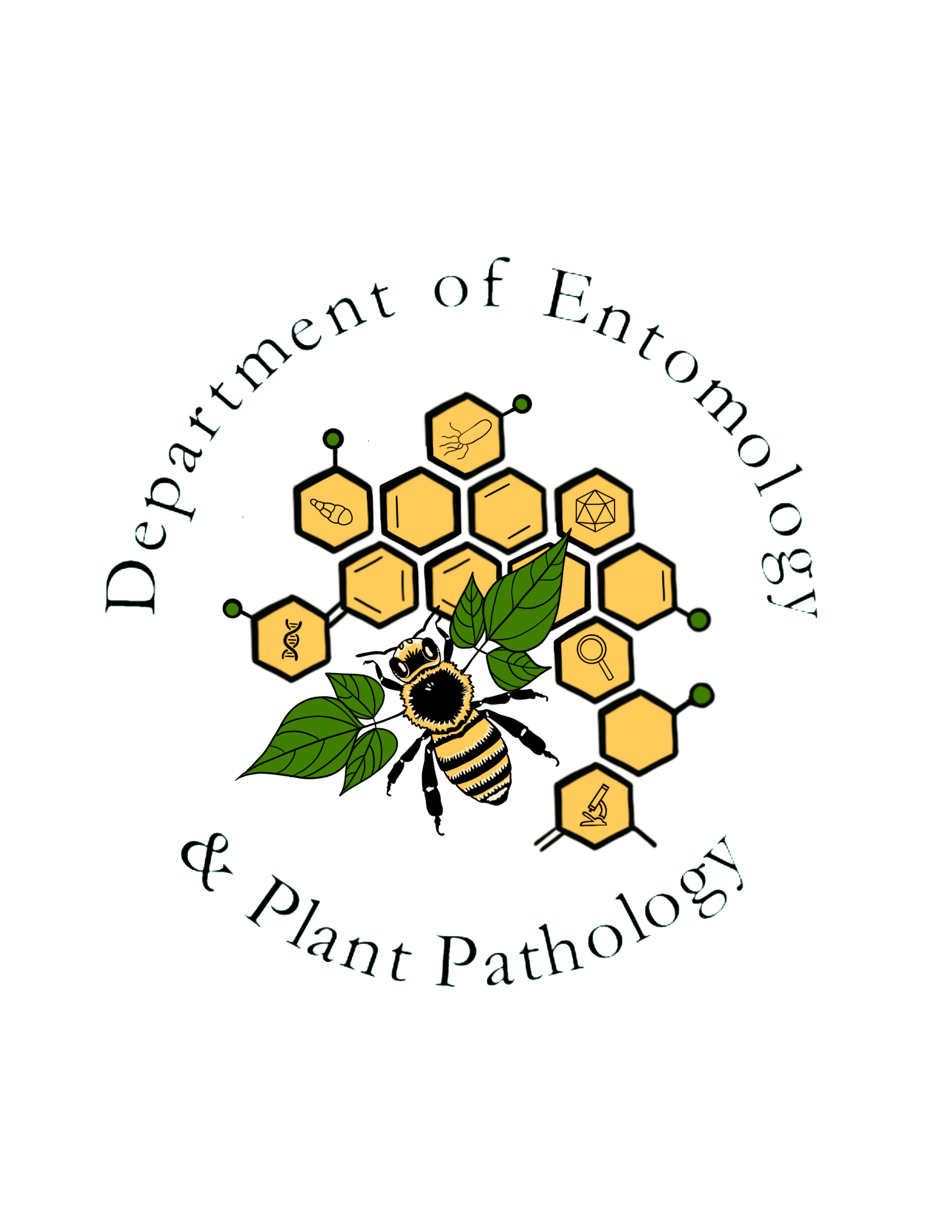Post-oak locust
Order: Orthoptera
Family: Acrididae
Genus and species: Dendrotettix quercus Packard

The post-oak locust occasionally appears in outbreaks of devastating local abundance in oak forests of the eastern United States, and then populations subside to levels of near rarity. The species occurs from southern New York to Tennessee and from Wisconsin to eastern Texas. Nymphs and adults spend most of their time in host trees or shrubs, where they feed on the foliage. Trees can be completely defoliated, but they rarely die. These grasshoppers prefer oaks of the red oak group, such as red oak and black oak, rather than the white oak group, and they also attack foliage of hazelnut. At least in the northern part of the species’ range, most individuals have a 2-year life cycle. Most individuals appear biennially in odd-numbered years, but a few individuals can be found in intervening years. Adults can be either short winged (brachypterous) or fully winged (macropterous); an intermediate form is rare. However, even the macropterous individuals have never been observed using their wings in sustained flight. Eggs hatch in late May or early June, and the grasshoppers mature around early July. Egg pods are deposited in soil near margins of oak woods beginning in mid-July.
